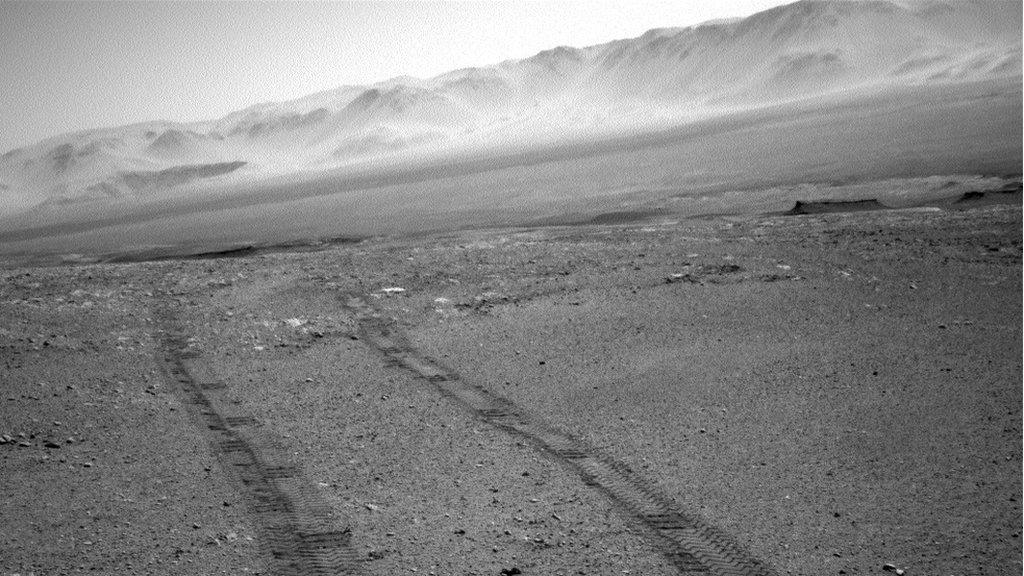Scottish 'site' in new Martian panorama from Nasa
- Published
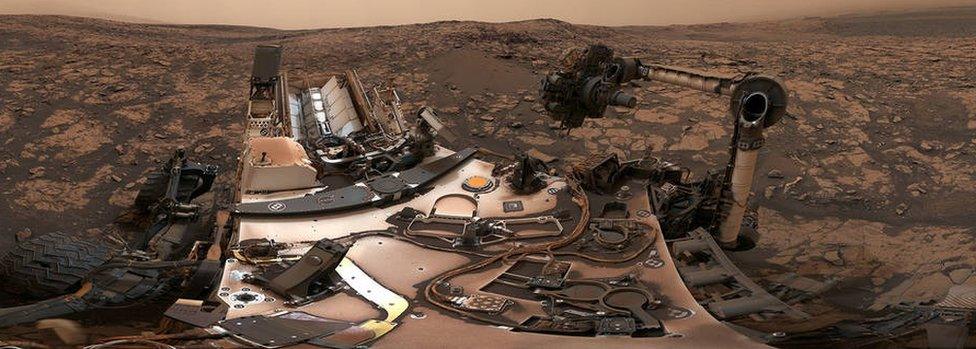
The new image is a 360-degree panorama of a Martian landscape
Nasa has released a new image of Mars that include a site named after Stoer in Assynt in the north west Highlands.
The 360-degree panorama, external was created using photographs taken by Curiosity, a robot exploring the Red Planet.
It is of the Vera Rubin Ridge, and includes a sky darkened by a fading planet-wide dust storm.
In the foreground is the "drill target" Stoer, named after an area of Assynt with rock formations of interest to geologists and other scientists.
Stoer is in the North West Highlands Geopark. The park contains some of the oldest rocks to be found anywhere in Europe.
Nasa said "important discoveries" about early life on Earth were made in lakebed sediments at Stoer.
'Mechanical problem'
The US space agency used a drill on Curiosity to take samples of the rock at the location on Mars.
Nasa said: "The new drill sample delighted Curiosity's science team, because the rover's last two drill attempts were thwarted by unexpectedly hard rocks.
"Curiosity started using a new drill method earlier this year to work around a mechanical problem.
"Testing has shown it to be as effective at drilling rocks as the old method, suggesting the hard rocks would have posed a problem no matter which method was used."
There are many locations on Mars named after places in Scotland, often due to the Scottish sites having important geology.
Among the place names on the Red Planet are Glenelg, St Kilda, Torridon, Siccar Point, Muck, Wick, Sandwick and Holyrood.
- Published4 June 2018
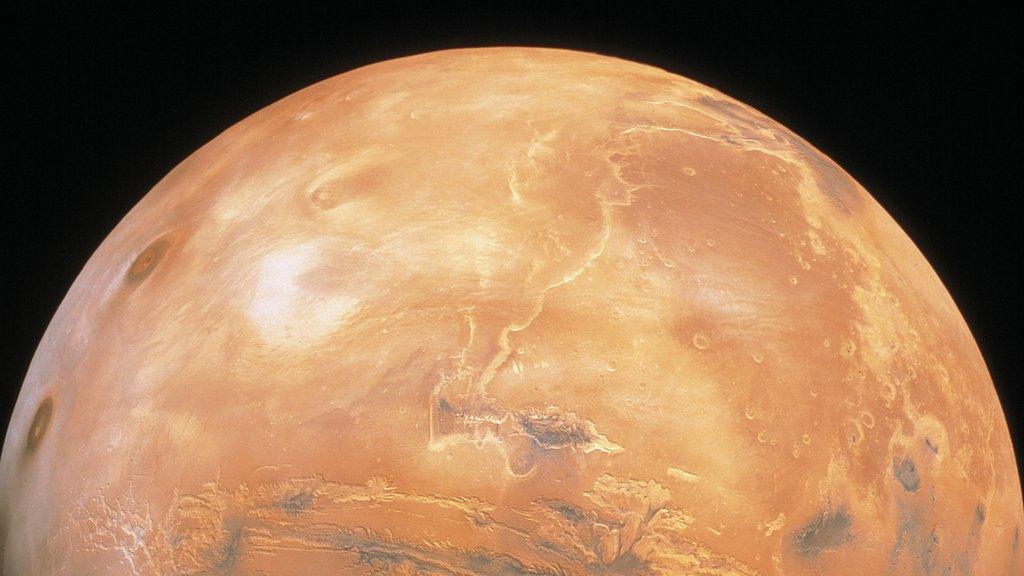
- Published20 February 2018
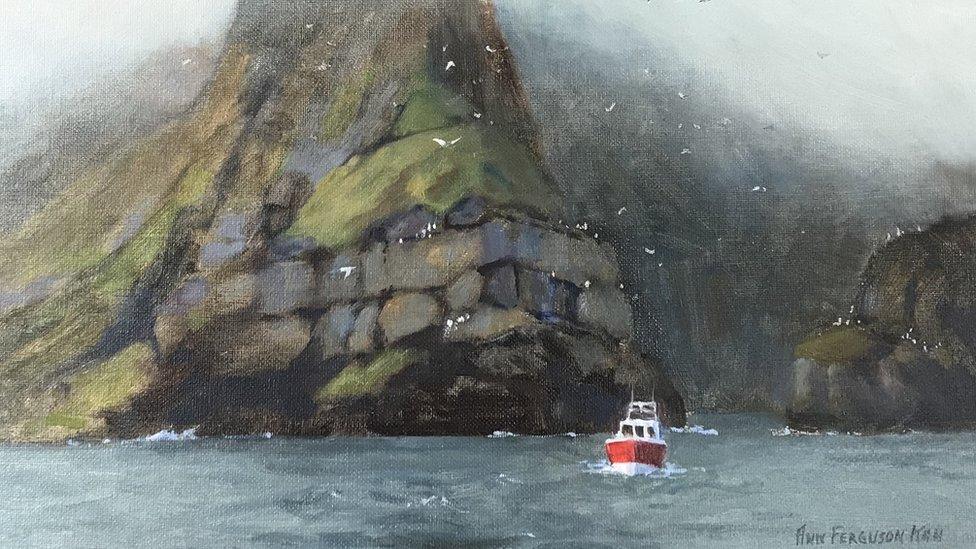
- Published9 February 2018
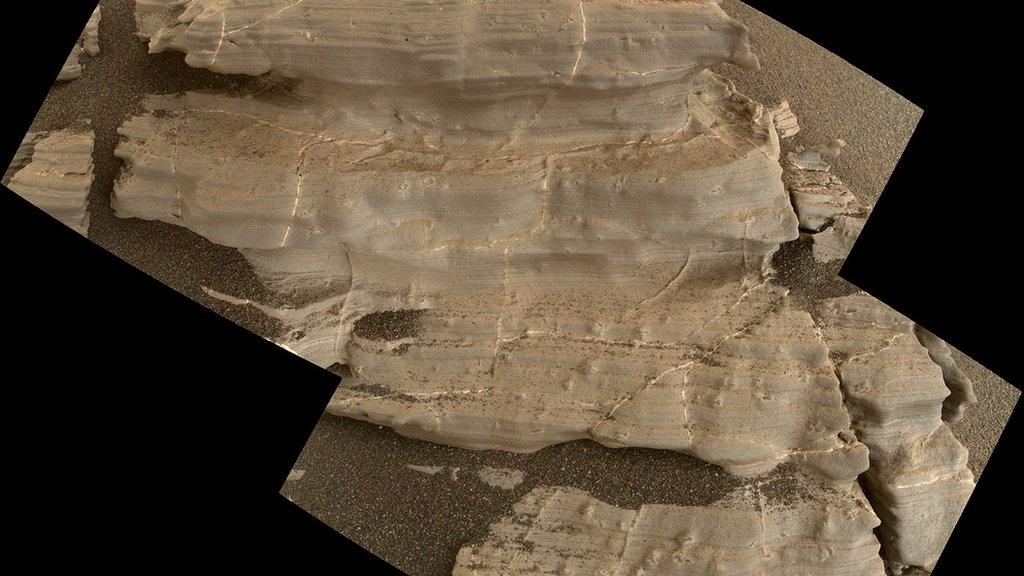
- Published11 January 2018
